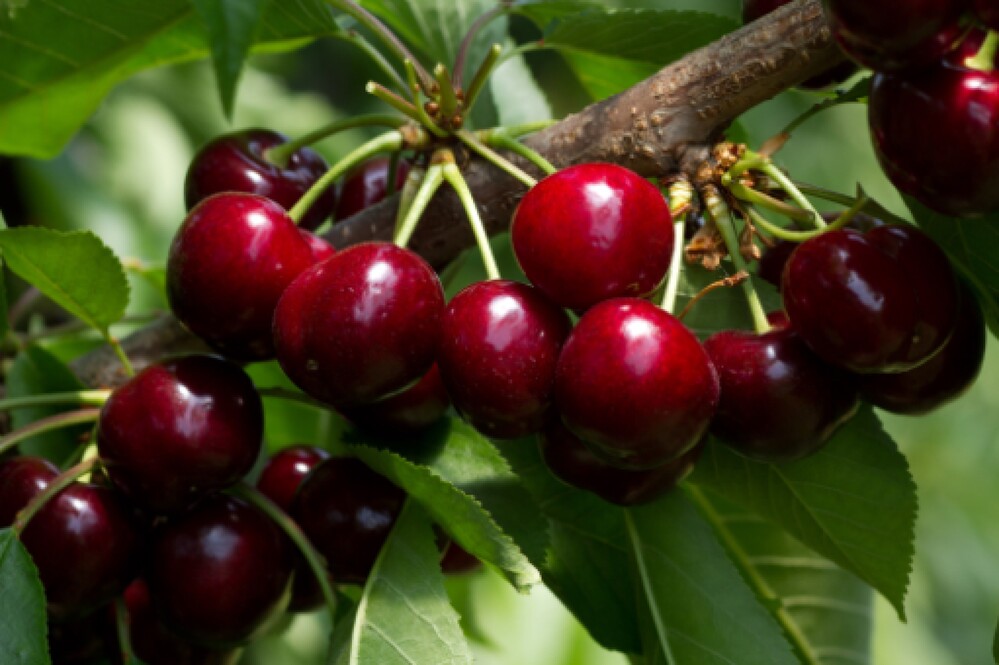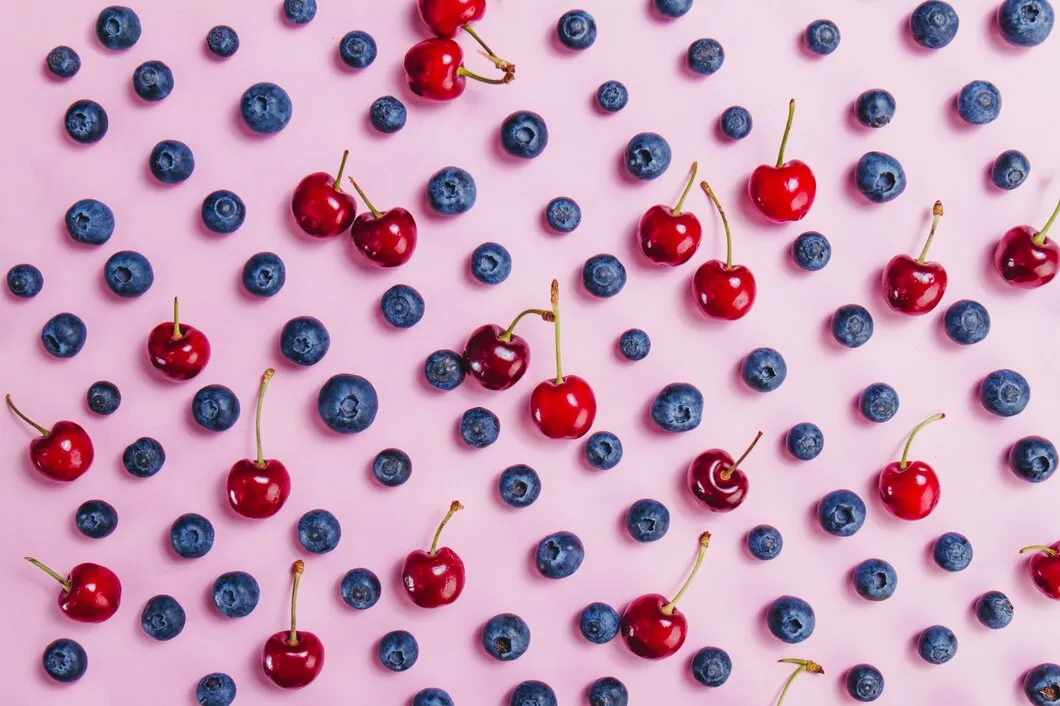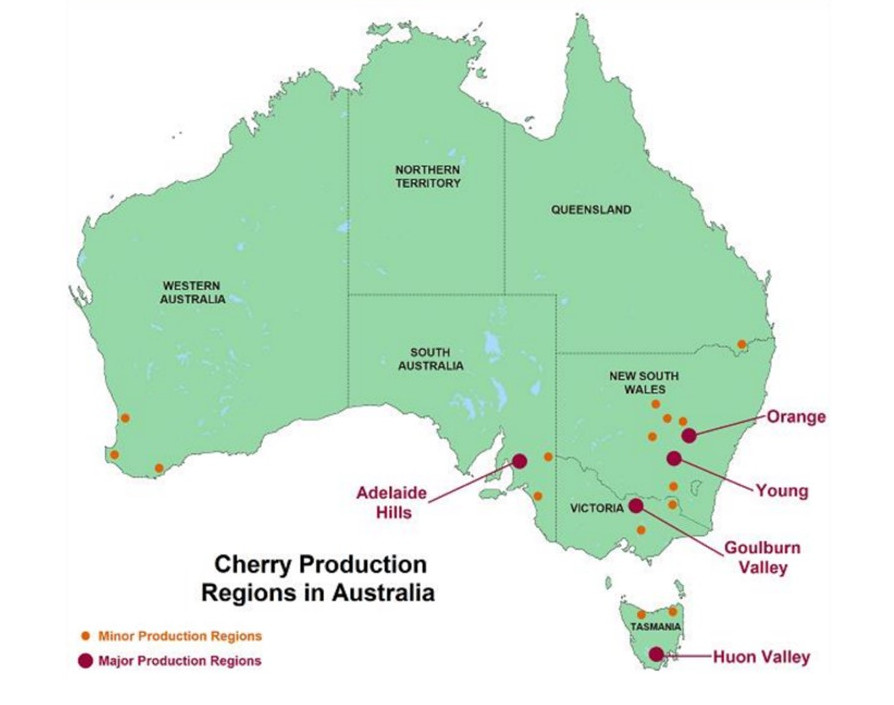2023 was a complex year, both because of the drought in the central-northern zone, the unexpectedly heavy rainfall in the central-southern zone, and because the prices of some species were lower than expected.
This has undoubtedly led producers to think about new production strategies or even to redesign their business, abandoning species in which they can no longer compete, because the costs do not correspond to the yields, or simply because new alternatives are emerging which could be interesting.
In this sense, cherries continue to be the most profitable species for the entire production chain and are once again the most sought-after species in nurseries.
CHERRIES: NEW VARIETIES
Currently, there are more than 60,000 hectares under cherry cultivation in the country and the regions with the largest cultivated areas are Maule and O'Higgins, with 27,818 hectares and 22,966 hectares respectively. The leap has been great in the last ten years, when there were only 13,641 hectares.
The explosive growth has led to the appearance of new, more precocious production areas, such as in the Limarí Valley in the Coquimbo region, where experts like Jorge Astudillo, who has been producing cherries in Ovalle for seven years, estimate a growth of 100 hectares per year, to the approximately 500 hectares planted today, in an area where varieties with low chilling requirements stand out.
This is known by the managers of Bloom Fresh, a company formed by the merger of IFG and SNFL, which has carried out trials in Ovalle and Vicuña. The company has 60 hectares of varieties planted in the country, between trial blocks and commercial projects, up to the Atacama region. Soon this will not be the northernmost area where cherry plantations will be present, as the company has confirmed the start of a trial block in Arica.
In Limarí, growers have included varieties such as Santina or Lapins in their portfolio, which could be harvested and exported a few weeks earlier than those in the central area. Another company that has made a strong commitment to Ovalle, without neglecting the substitution that is taking place in the rest of the country, is ANA Chile, with a wide range of varieties for the different strategies that growers want to adopt.
Its commercial director, Andrés Valdivieso, told Redagrícola that by far the most popular variety for sowing was Sweet Aryana (UNIBO), 'which was the star'.
 Sweet Aryana
Sweet Aryana
This variety already accounted for 1,465 hectares, and has expanded considerably this year after ANA Chile's sales of more than 383,000 plants, not to mention the fact that sales of spring plants, which account for about 50 per cent of the plants sold during the year, have yet to be closed, 'based on decisions that growers make somewhat on the fly, taking into account the expected results for the year,' explains Valdivieso.
Until the end of November, ANA Chile had sold about 700,000 cherry plants, more than half of which were Sweet Aryana, which would be equivalent to about 350 hectares, considering about 1,200 plants per hectare. The Pacific Red variety follows: ANA Chile sold 131,000 plants of this variety in 2023, while in third place is Nimba, with 91,000 plants. Another variety that stands out is Areko, of which about 70,000 plants were sold, or about 183 hectares.
The sale of these new varieties marketed by ANA Chile was fairly evenly distributed between Ovalle, in the Coquimbo region, and the central-southern area of the country, points out ANA Chile's sales manager. 'It continues to be a good year' for cherry tree sales and his main concern is that the fruit his trees produce and which is sent to China 'arrives as standardised as possible'
Valdivieso emphasises that 'we have made a huge effort to meet with all growers who will mainly have Nimba and Sweet Aryana, to try to give them the best possible guidelines to come up with an optimal quality product and to establish them as attractive, good-to-eat varieties from the start, because in the end there is only one chance to make a good first impression'.
Why is Sweet Aryana so popular? According to Valdivieso, it is mainly due to its earliness of harvest - about 10 to 12 days earlier than Santina, without cover technology and under the same conditions - as well as the fact that it is a variety 'that has a good calibre, is productive, is self-fertile and has very few production problems; we have seen that it is a variety that is not very complex to handle', as well as being a variety that performs very well both for the plane trip if it is harvested before week 45, and for the ship trip to China.
At Univiveros, on the other hand, the pome and cherry manager, Vicente Villagrán, points out the sales recorded for the variety Pacific Red, which had a good start 'because it is a consistent variety that has better legs in terms of post-harvest and especially durofel, growers had a little more confidence with Pacific Red'.
Regarding Sweet Aryana, Villagrán points out that the first few seasons since it started being marketed in 2019, its release was very sharp and potent, but now growers have put the brakes on a bit, to see how the production of the first plantings, which will be exported this year, performs, especially after the climatic instability that occurred in 2023.
"It is an early variety, but quite susceptible to cracking, so growers are watching to be clearer on the results before they start growing this variety. It has a very good performance, but growers are taking some extra precautions."
REVIVAL OF TRADITIONAL VARIETIES
The growth of cherries in Chile is not only associated with new genetics, as traditional varieties such as Lapins and Santina continue to be trusted by many growers, despite doubts especially about Lapins after false reports of shipments with Covid were spread a few seasons ago.
But that episode now seems to be behind us and the results show a resurgence of confidence in these varieties: Univiveros has already marketed around 250,000 Santina plants this 2023; 70,000 Lapins plants, and expects to end the year with around 400,000 plants sold of these varieties.
"Because of the low yields that season, growers were very reluctant to continue with Lapins, but we have seen that in irregular and not very cold seasons like this one, Lapins is a variety that has done well, I have seen it all over Chile, both in Ovalle and in the central area, with growers who have not had much cold accumulation, and it has performed well, both in terms of fruiting and vegetative growth,' explains Villagrán about the recovery he sees in this variety, known among consultants and growers as the 'payer box'.
However, the performance of Lapins this season contrasts with that of Santina, which has been strongly affected by climatic uncertainty, low accumulated cold, rainfall and a colder than expected spring, which led it to have a "very irregular" performance, explains Villagrán, emphasising the uneven growth and irregular fruit set of this heart-shaped variety, which is the variety with the largest planted area in Chile.
Another of the traditional varieties that has re-emerged strongly according to the Univiveros register for 2023 is the Kordia variety, known to be a late variety with a high cold requirement, which has had a good start to sales this year, with large projects in the central and south-central area of Chile with around 120,000 plants sold.
Kordia, which is a variety that was once concentrated in the southern part of the country, gives space to another of the key points Villagrán highlights about cherries: the southern area 'has the handbrake on', reluctant to make new investments, basically because of the heavy investments made in previous years, not only in plant material but also in technology to protect the crops.
These results were then somewhat truncated by the poor results recorded during the pandemic, mainly due to the logistical crisis that the world experienced, which meant that many fruits arrived in poor condition and made producers unprofitable; that is why there is still a brake on these projects in the southern part of the country.
Villagrán believes that this year has been an average year, neither very good nor very bad: 'Many of the deliveries this year (in winter) were made a year in advance, so we had the brake of producers who were early with their projects.
"But you can't say it was a very bad year either, because the late part of the south did not plant and in many cases did not even replant their orchards, waiting for the season to come and for the pricing scheme for this fruit to be defined a bit," stressing that the north-central and south-central areas allowed for a balance of forces.
Source: Redagrícola
Cherry Times - All rights reserved












